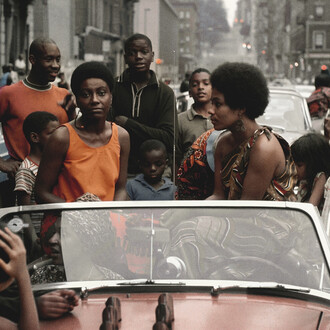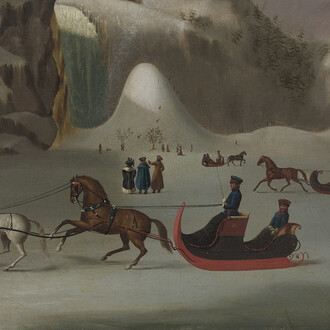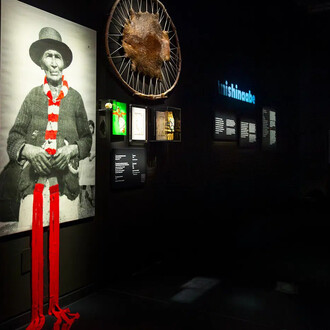When Laurent Lamarche reflects on the concept of origin, he thinks in terms of traces. His vision goes at once forward and backward, knitting together yesterday and tomorrow – thus expanding and deepening the poetic tenor of his work. Lamarche’s aesthetic is rooted in the persistence to shape to organic matters and objects, picturing lunar or Nordic landscapes that undeniably echo a futuristic aesthetic.
The plexiglass works from the Fossile series praises life; they suggest an environment inspired by natural propagating systems of growth, or potentially neural interconnexions. The rhizomatic configuration that appears is captivating not only because of its visual rhythm but also because it seems to erase any temporal boundary. Are these traces in the plexiglass witnesses of a time that is past, uncertain or frozen?
More often then not, Laurent Lamarche’s sculptures result from a tension between low tech and high tech. And science fiction is never really far. Here, they are, among other things, the offspring of an assemblage of different modeled space ships (Star Wars) that the artist has 3D printed. Perhaps the formal recognition is not immediate, but the figurative composition remains significant. The flawed/imperfect aspect that results from the printing procedure unveils a finish that is at once organic and vegetal. Exhibited on laboratory-like tables, the sculptures give the impression of undergoing a transformation. Or perhaps we see them as remains of species found during an archeological search from the future.
The territorial conquest, studies on origins and investigations on the living continue in the series Zone de contact. The images from this series were created from the scan of a matrix generated with a 3D printer. This matrix, a few millimeters thick, resulted from an impression that was voluntarily halted halfway through the process. From there, the nylon threads mesh evokes the delicacy and complexity of mapping language. Whereas in Zone de contact we can observe an atlas of the human body from a strangely familiar robot’s eye, in Territoire ductile it is a vast imaginary landscape that unfolds before and in front of the viewer.
At last, Lamarche plays with tridimensionality onto a two-dimensional plane in his video Canopée in which the notion of stratum emerges from the limits of the plane. He explores the superior portion of different hardwood and softwood trees with the help of a modelling software. After dividing the model into successive layers (wire frames), he constructs an animated video where the viewer dives into the layers of the virtual plants. Once more, Laurent Lamarche yields territorial poetry from his cogitation on origins and traces.
















